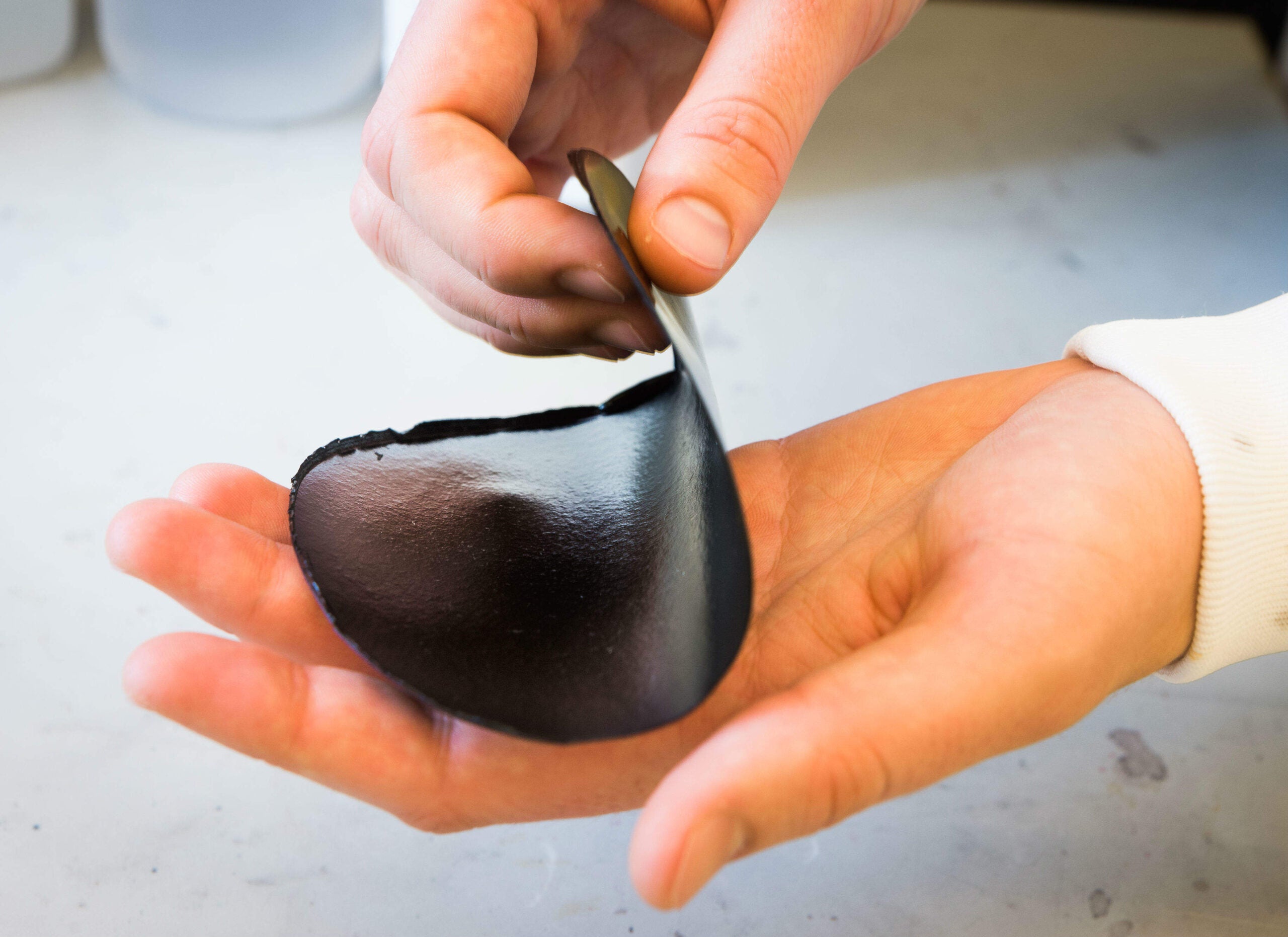

Researchers in Sweden have combined the country’s experience in the paper industry with special plastics to create a new record-breaking material which can store energy. The new power paper could be used to store energy generated by wind or solar, giving a potential solution to the energy storage problem often encountered when using renewables.
The team, led by Professor Xavier Crispin at Linköping University’s Laboratory of Organic Electronics, has been working on conducting polymers – plastics that conduct electricity – for many years. They wanted to combine the assets of conducting polymers with a material called nanocellulose to improve the properties of both and came up with a composite material that is cellulose-based and can also store energy.
Strong, flexible and very thin
Nanocellulose is a material derived from wood fibres, with strength that can be on level pegging with Kevlar. Once blended with the plastic, the mixture is poured into a petri dish where it sets. The resulting product is just one micron thick, shiny, very strong and flexible.
"We could not go above that without losing the properties of the material," says Crispin. "If we made them thick, they get fragile so they are not really flexible and tough anymore."
Computers, smartphones and other everyday electronic devices become thinner and thinner every year but this trend cannot be observed in power supply devices, so this technology could hold the answer.

US Tariffs are shifting - will you react or anticipate?
Don’t let policy changes catch you off guard. Stay proactive with real-time data and expert analysis.
By GlobalDataDubbed ‘power paper’ by the researchers, the paper-like material conducts electricity and ions. It is just a few tenths of a millimetre thick and can store up to one farad of energy when charged with one coulomb of electricity. The researchers demonstrated just how durable the material is by folding it into origami shapes.
The power paper is cheap to produce and the materials required to create it are easy to acquire, which is a unique selling point as that is not always the case when building advanced storage batteries, for example lithium-ion batteries such as the Tesla Powerwall.
"Nowadays, the materials used for good batteries are quite expensive and sometimes are composed of materials that are rare," says Crispin. "[Power paper] materials are based on trees physically; cellulose and a conducting polymer, which are just a kind of special plastic, composed of carbon and oxygen. These are all very abundant atomic elements."
Proportionally, this makes power paper very cheap, which means that the technology can be used to build super capacitors and batteries on a large scale. The paper is also light and no dangerous chemicals are involved in its production.
Record-breaking conductivity
Another novel characteristic of the material is that it conducts both electrons and ions, which makes it a mixed conductor. The material has even set a new world record in simultaneous electron and ion conductivity.
"You need absolutely to have those materials when you want to build batteries or a super-capacitor," says Crispin. "When we looked at the survey of materials, we found out that our material has the best combination of the electronic conductivity and ionic conductivity."
Crispin says that combining very good ionic and electronic conductivity is unique. So, although power paper may not the best material in terms of storing large amounts of energy, it is the only one capable of combining ionic and electronic conductivity on this scale.
"In terms of amount of energy per volume, it’s not the best one," Crispin says. "We need to improve that; that is the next step in the research."
Each piece of power paper can be recharged within seconds, hundreds of times. The team admits that more work needs to be done on the material so that it doesn’t discharge so readily and can be used in more advanced battery technology.
Power paper could, however, be used in super-capacitors, devices that store energy for a short time and release it quickly.
Future research and applications
Given the speed of technological progress in wearable computers and devices, ultra-thin battery technology could have very widespread applications once the system’s shortcomings are addressed.
"[Power paper] can be electrodes in super-capacitors for energy storage, or potentially later on, if we improve that, it will be good electrodes for batteries," says Crispin. "The point that we wanted to make is of course the necessity in our society to basically be able to store large amounts of electricity."
As its name suggests, power paper looks like paper and is manufacturable with similar machines as conventional paper because it has the same kind of mechanical properties. It is formed from a regular pulp which has to be dehydrated. Sweden is already very well equipped to develop materials such as this, being the world’s second largest exporter of paper, pulp and sawn wood products, and its paper industry is the third largest in Europe, behind Finland and Germany.
Resilient, flexible, easy charging materials such as power paper are likely to be popular partners to sources of renewable energy. The problem of how to store energy when the sun goes down or wind stops blowing is one that will stick around, and cheaper options to do this are going to be the most attractive.
It may be in early development still, but the future of power paper looks promising, particularly while there is such an emphasis on making energy storage cheaper and more reliable. If power paper becomes better at storing energy, then we could see technology such as this appearing in many devices in the future.




